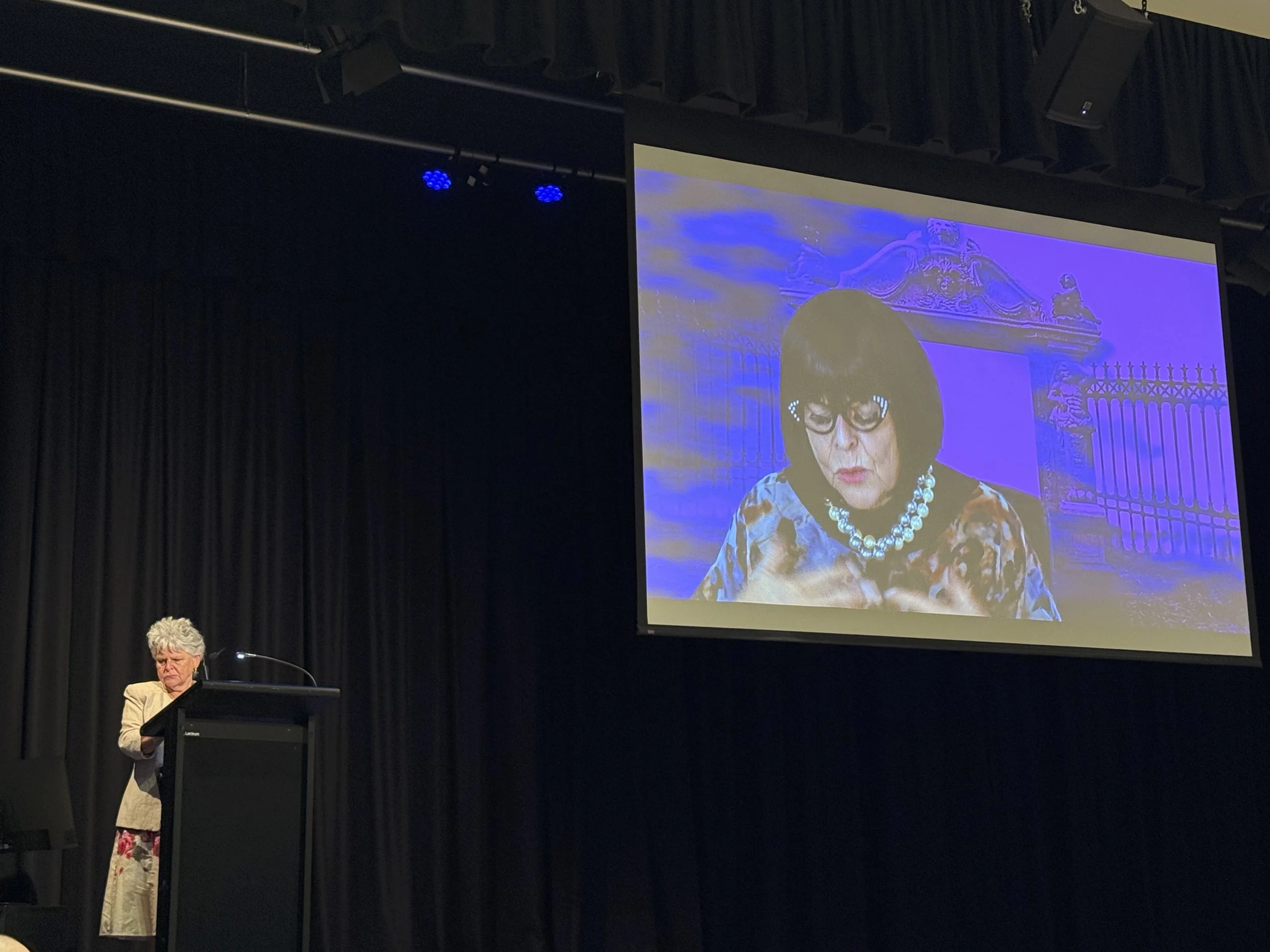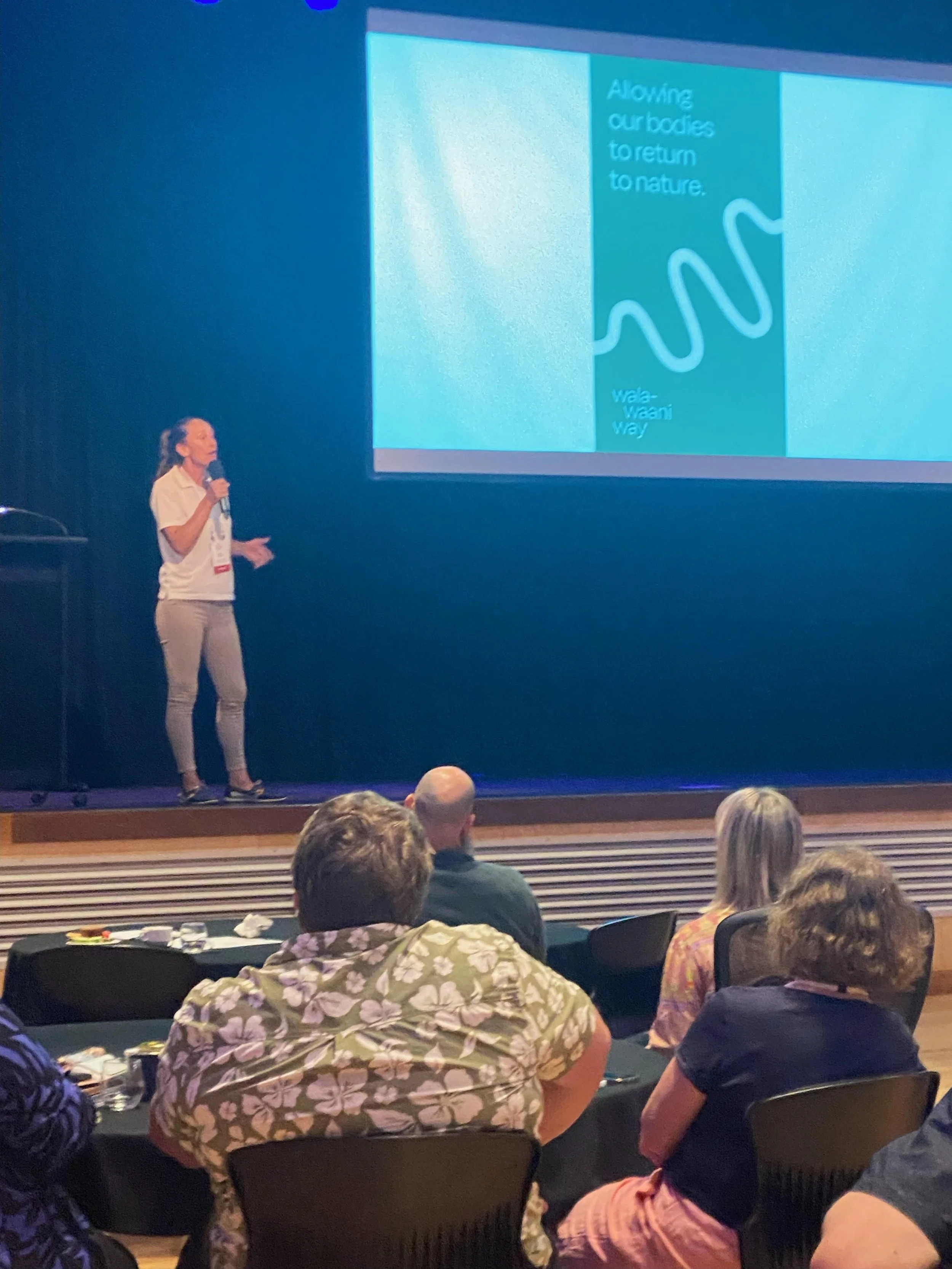How Far is too Far?
How far or extreme do you go with a burial ground that you aim to be the best in the world from an environmental sense? The answer is, we will be True-to-our-Word, but there comes some give and take, in the modern world we live in today.
It was after my speech at a recent industry conference in Bega when I was asked a very important question:
A lady at the back was eager to talk, her back was straight and she had her armed stretched high towards the ceiling, when her turn came she said “How can you call yourself an authentic natural burial ground when you still allow new hips and knees? I must admit it took me back a little, not so much the question but the direct nature in which it was delivered (please note that this was my first industry conference, so I think I made friends with most... but maybe not all as I spoke out about some ways to do things differently.)
It was a very good question and followed on nicely from the end part of my Talk where I had explained that we had education and procedures in place to ensure the buried bodies were not harmful to the soil. This involves some formal paperwork from the people who have ‘prepared the body’ (be it the funeral directors, mortician, death doulas or the family) A from is signed and sent to us before the body arrives on-site at Walawaani Way that confirms the following, including;
No embalming of the body
Pace-makers removed (as they have a battery which pollutes the soil over time)
Dentures, glasses and anything non-biodegradable removed
Natural fibres only - ie: cotton, linen or hemp for the Shroud or the Clothing worn, no shoes (unless completely natural)
No jewellery (to protect the habitat from potential looters in 300 years’ time, say!)
But.. how far is too far? What about the new hips and knees and other prosthetic additions to the person?
I feel that this is going TOO far. To start with - Titanium is a metal and not one to harm the soil over time. However there are some elements of cobalt-chromium alloys and plastic parts that are not great for the soil. What do we do? Do we exclude these people to become part of Walawaani Way? Do we demand them to undertake invasive surgery after they have passed? Will the living family members agree to such an operation, and at what financial cost? This has something that we have grappled with for some time….
For anyone who has had a new hip or knee you would agree that removing them would be nearly as invasive and brutal as their implementation. It’s very hard to take them out.
We made the decision - that all prosthetic additions can be buried if that person chooses. It also leaves the option open to those who wish to remove them, which is a decision we would most prefer.
Shanna Provost speaking at the CCANSW Conference in Bega - she is the number one person on the South Coast for educating people about end-of-life options and also puts some humour into it (thank goodness!) She has a brilliant ability to engage people on a subject that is so important to discuss.
“Saying that - (and thank you to the lady who prompted this new addition to the site)… we will have an area dedicated to the BEST practice possible, an area that does not have new hips and knees. You won’t see me buried in this section as I’ve got a new hip but I’m sure there will be plenty of friends to keep me company!”
I’d love to hear your thoughts about this - so please write to me, with whether you agree or disagree… everything I do at Walawaani Way needs to be constantly evaluated and discussed. Cheers Fiona
Fiona talking about Natural and Conservation Burials at the CCANSW Bega industry conference 6th & 7th November 2025.


